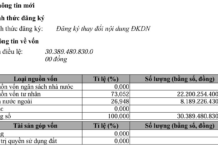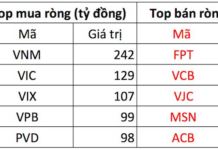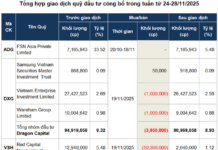According to Ho Chi Minh City Customs Department, by early February 2024, the total amount of goods stockpiled for more than 30 days, 60 days, and 90 days in the ports in the city increased significantly, reaching over 6,000 containers. Among them, the stockpiled goods for over 30 days and 60 days accounted for more than 1,228 containers, an increase of 48% compared to the 401 containers in December 2023. The stockpiled goods for over 90 days were 4,845 containers, a slight decrease of 5% compared to December 2023.
The majority of stockpiled goods are concentrated at the Ho Chi Minh City Customs Branch of Cat Lai Port area 1 (located at Cat Lai Port). Accordingly, the number of stockpiled goods for over 30 days and 60 days exceeds 1,227 containers, while the stockpiled goods for over 90 days reach 4,496 containers.
 Container goods at Cat Lai Port |
In addition to stockpiled goods at ports, the stockpiled goods at the airports’ customs checkpoints have also increased significantly, reaching 2,038 types of goods, with a total weight of 469,583 tons. Among them, the Ho Chi Minh City Customs Branch of Tan Son Nhat International Airport accounts for nearly 1,700 types of goods, with over 477 tons.
Explaining the surge in stockpiled goods at ports, especially at Cat Lai Port, at the beginning of 2024, a representative from the Ho Chi Minh City Customs Branch of Port Customs Branch 1 said that this is the end of the lunar year, when businesses import a large amount of goods, including many goods that have not been processed in time, resulting in stockpiling.
In reality, a large quantity of stockpiled goods at ports can also hinder the loading and unloading operations, customs clearance for import-export businesses, for shipping companies, and port operators. If the stockpiling lasts for more than 90 days, it will require multiple steps and incur significant costs for the parties involved.
In an exchange with us, Mr. Nguyen Huu Nghiep, Deputy Director of Ho Chi Minh City Customs Department, stated that in order to strengthen the inspection, supervision, and control of imported goods stored in warehouses, ports, and customs checkpoints, the department regularly reports the stockpiling data to the Supervision and Management Department of Customs – General Department of Customs.
According to the stockpiled goods processing procedure, if it exceeds 90 days, it means that customs has contacted and notified multiple times without any receiving party, then it will be determined as ownerless goods, and the owner may abandon them… and the processing will be carried out in accordance with regulations. As for the processing of stockpiled goods, it must be implemented according to a different procedure that requires the participation of multiple units in the council.
Son Nhung





































